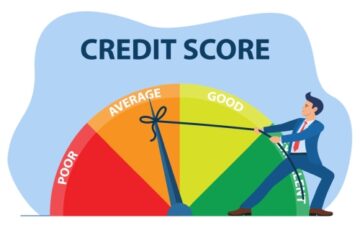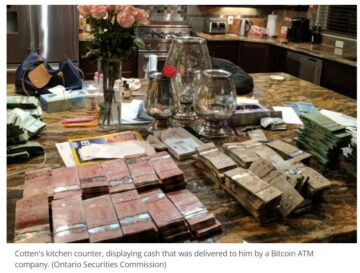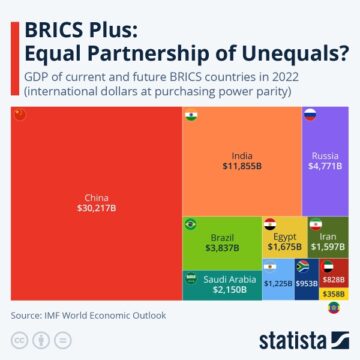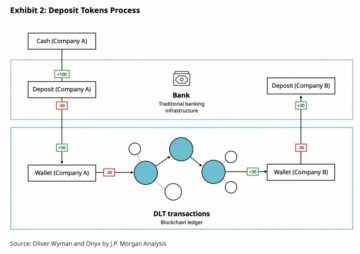Bloomberg Law | Daniel Davis and Alexander Kim | Apr 26, 2023
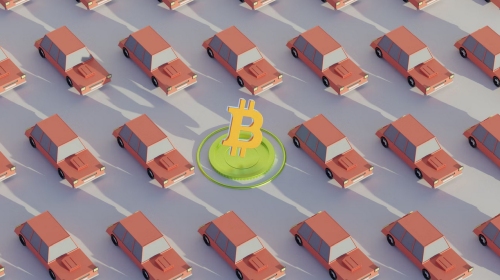
Image: Unsplash/Shubham’s Web3
Unlike traditional NFTs, Bitcoin Ordinals give Bitcoin both fungible and non-fungible properties raising challenging regulatory questions surrounding the characterization of the digital asset under the federal securities laws.
- Bitcoin Ordinals allow Bitcoin holders to permanently inscribe satoshis with unique digital content, giving them both fungible and non-fungible properties.
- Bitcoin Ordinals, enabled by a 2021 upgrade to the Bitcoin protocol named Taproot, allow Bitcoin holders to “inscribe” permanently the smallest unit of Bitcoin, or satoshis, with unique digital content of up to 4 megabytes.
- They have generated significant interest in recent months, contributing to a surge in Bitcoin transaction fees in early 2023. According to recent media reports, more than 500,000 Bitcoin Ordinals have been “minted” or issued on the Bitcoin blockchain to date.
See: CFTC Says Bitcoin is the Only Commodity | ECB Criticizes Digital Asset Sector for Facilitating Illegal Activity
- The regulatory implications of Bitcoin Ordinals are still unclear.
- The duality of a digital asset that can switch between fungible and non-fungible states raises challenging questions for regulators, particularly regarding federal securities laws.
- It remains uncertain how regulators will characterize a digital asset that continuously morphs between being a fungible token and an NFT, and how its treatment may change over time depending on its use and market value. As innovations in the digital asset space continue, regulators will need to adapt and find creative solutions to address these emerging trends.
- For example, it is unclear whether a unit of a digital asset that was once issued as a security ceases to be a security if the same unit of the digital asset is later sold in a non-fungible capacity as a digital collectible.
Continue to the full article –> here
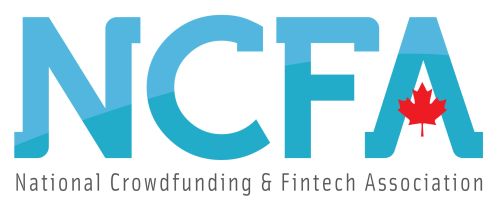 The National Crowdfunding & Fintech Association (NCFA Canada) is a financial innovation ecosystem that provides education, market intelligence, industry stewardship, networking and funding opportunities and services to thousands of community members and works closely with industry, government, partners and affiliates to create a vibrant and innovative fintech and funding industry in Canada. Decentralized and distributed, NCFA is engaged with global stakeholders and helps incubate projects and investment in fintech, alternative finance, crowdfunding, peer-to-peer finance, payments, digital assets and tokens, blockchain, cryptocurrency, regtech, and insurtech sectors. Join Canada’s Fintech & Funding Community today FREE! Or become a contributing member and get perks. For more information, please visit: www.ncfacanada.org
The National Crowdfunding & Fintech Association (NCFA Canada) is a financial innovation ecosystem that provides education, market intelligence, industry stewardship, networking and funding opportunities and services to thousands of community members and works closely with industry, government, partners and affiliates to create a vibrant and innovative fintech and funding industry in Canada. Decentralized and distributed, NCFA is engaged with global stakeholders and helps incubate projects and investment in fintech, alternative finance, crowdfunding, peer-to-peer finance, payments, digital assets and tokens, blockchain, cryptocurrency, regtech, and insurtech sectors. Join Canada’s Fintech & Funding Community today FREE! Or become a contributing member and get perks. For more information, please visit: www.ncfacanada.org
Related Posts
- SEO Powered Content & PR Distribution. Get Amplified Today.
- PlatoAiStream. Web3 Data Intelligence. Knowledge Amplified. Access Here.
- Minting the Future w Adryenn Ashley. Access Here.
- Buy and Sell Shares in PRE-IPO Companies with PREIPO®. Access Here.
- Source: https://ncfacanada.org/bitcoin-ordinals-exploring-the-convergence-of-fungible-and-non-fungible-digital-assets/
- :is
- $UP
- 000
- 2018
- 2021
- 2023
- 26
- 500
- a
- According
- activity
- adapt
- address
- affiliates
- Alexander
- allow
- alternative
- alternative finance
- an
- and
- apr
- ARE
- article
- AS
- asset
- Assets
- Association
- BE
- become
- been
- being
- between
- Bitcoin
- Bitcoin Blockchain
- Bitcoin Holders
- Bitcoin Transaction
- blockchain
- Bloomberg
- both
- by
- cache
- CAN
- Canada
- Capacity
- CFTC
- challenging
- change
- characterize
- closely
- Collectible
- commodity
- community
- content
- continue
- continuously
- contributing
- Convergence
- create
- Creative
- Criticizes
- Crowdfunding
- cryptocurrency
- Daniel
- Date
- decentralized
- Depending
- digital
- Digital Asset
- Digital Assets
- Digital Collectible
- Digital Content
- distributed
- Early
- ECB
- ecosystem
- Education
- emerging
- enabled
- engaged
- Ether (ETH)
- Exploring
- facilitating
- Federal
- Fees
- finance
- financial
- financial innovation
- Find
- fintech
- For
- from
- full
- funding
- funding opportunities
- Fungible
- generated
- get
- Give
- Giving
- Global
- Government
- Have
- helps
- holders
- How
- http
- HTTPS
- if
- Illegal
- implications
- in
- industry
- information
- Innovation
- innovations
- innovative
- Inscribe
- Insurtech
- Intelligence
- interest
- investment
- Issued
- IT
- ITS
- Jan
- jpg
- Kim
- later
- Laws
- Market
- market value
- max-width
- May..
- Media
- member
- Members
- months
- more
- Named
- National
- Need
- networking
- NFTs
- non-fungible
- of
- on
- once
- only
- opportunities
- or
- over
- particularly
- partners
- payments
- peer to peer
- perks
- permanently
- plato
- Plato Data Intelligence
- PlatoData
- please
- projects
- properties
- protocol
- provides
- Questions
- raises
- raising
- recent
- regarding
- Regtech
- Regulators
- regulatory
- remains
- Reports
- s
- same
- satoshis
- says
- sector
- Sectors
- Securities
- Securities Laws
- security
- Services
- significant
- smallest
- sold
- Solutions
- Space
- stakeholders
- States
- Stewardship
- Still
- Surrounding
- Switch
- taproot
- than
- that
- The
- Them
- These
- thousands
- time
- to
- today
- token
- Tokens
- traditional
- transaction
- Transaction Fees
- treatment
- Trends
- under
- unique
- unit
- Unsplash
- upgrade
- use
- value
- vibrant
- Visit
- was
- Web3
- whether
- will
- with
- works
- zephyrnet

